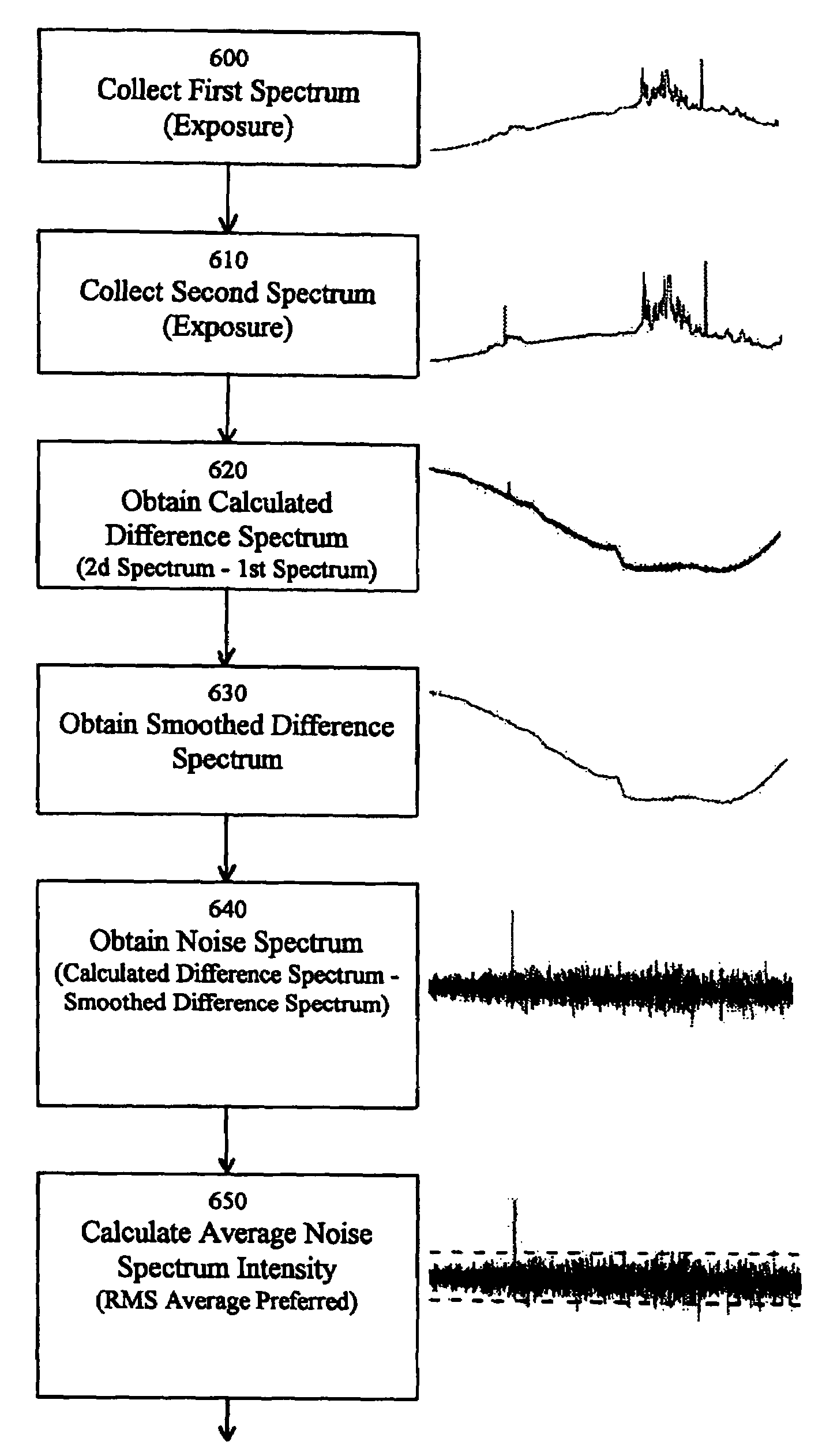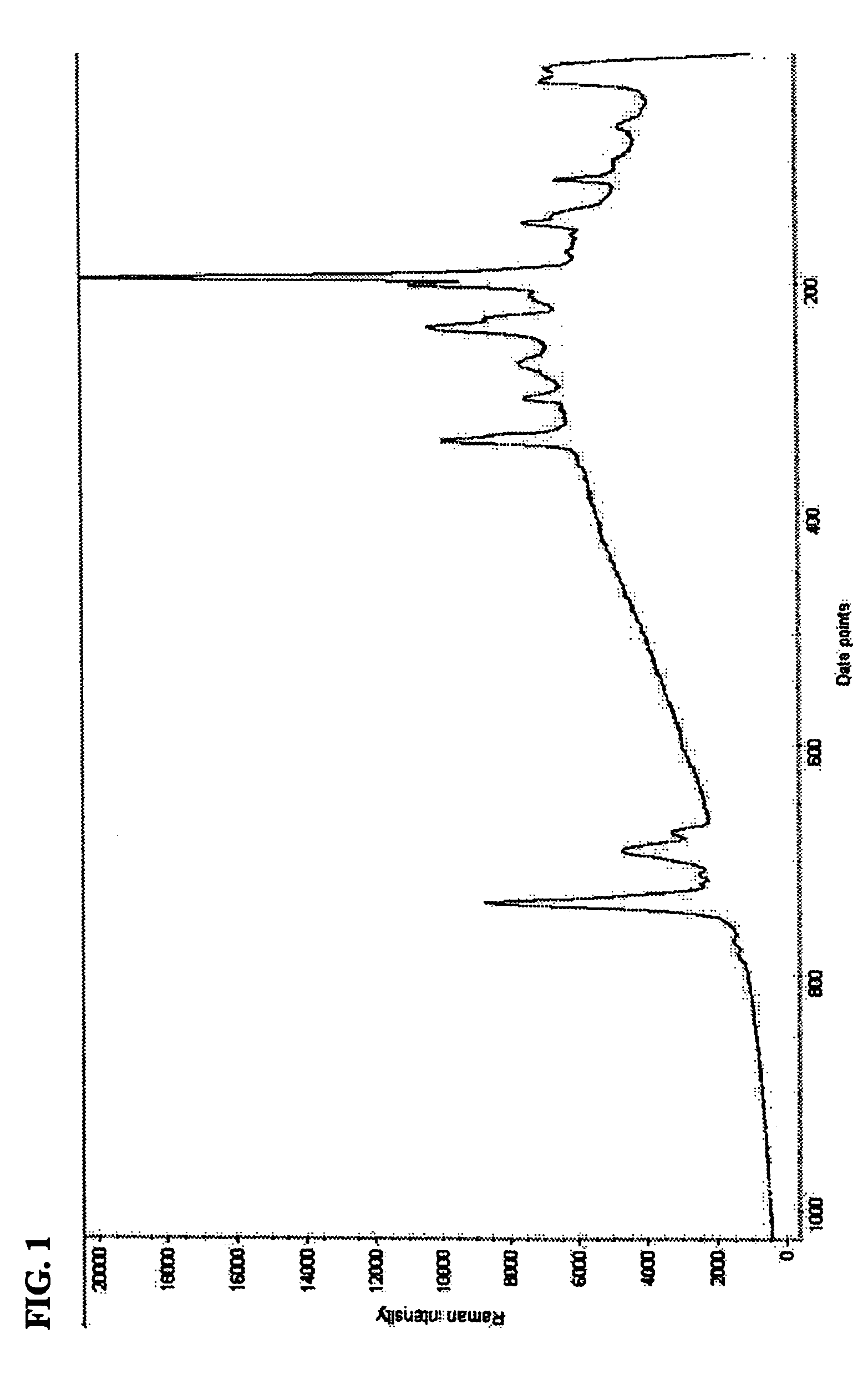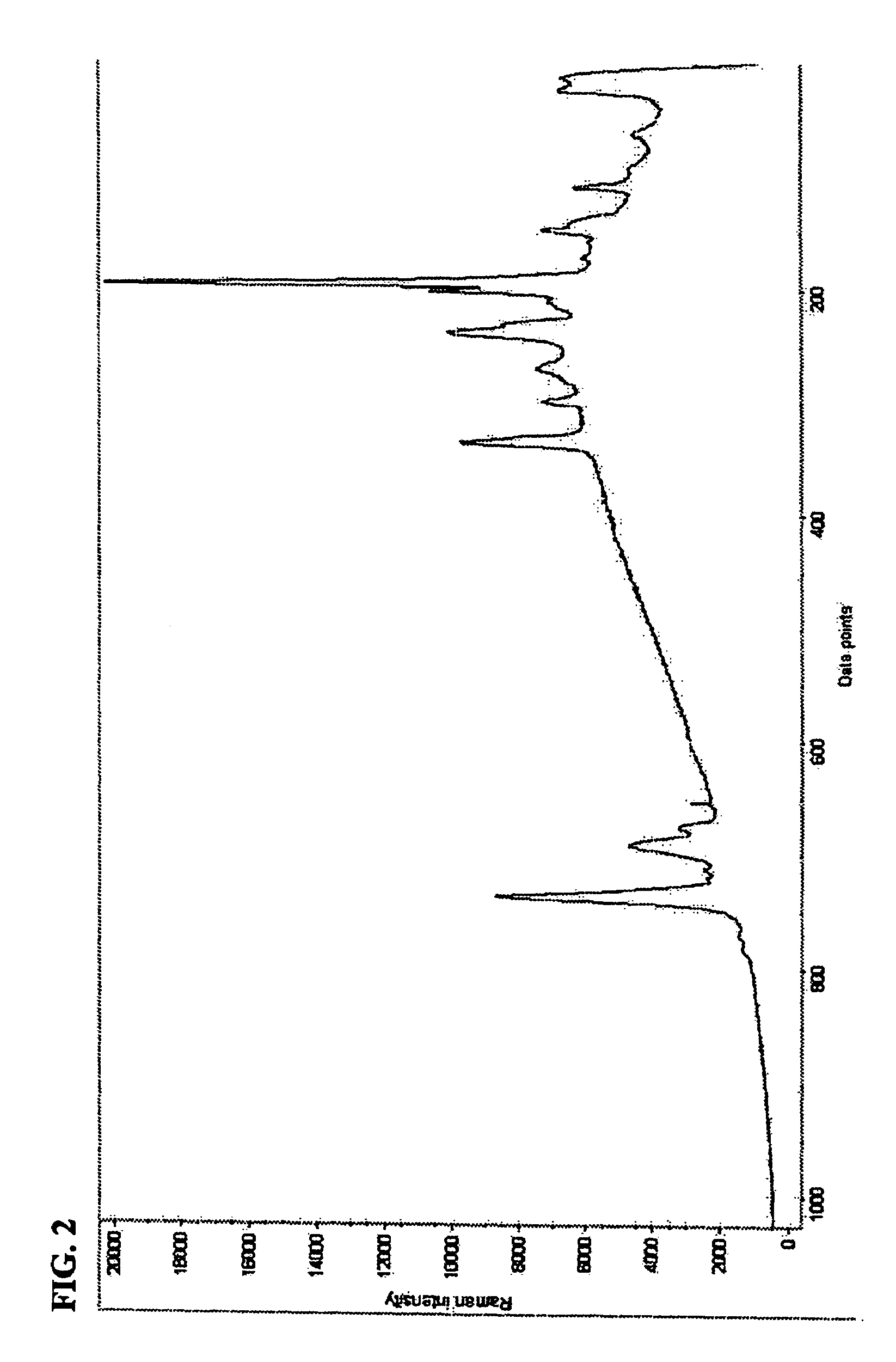Spectrometric data cleansing
a technology of spectrometric data and data cleansing, applied in the field of data processing and enhancement, can solve the problems of spurious intensity readings at these pixels, distortion of captured spectra, errors in spectrum data interpretation, etc., and achieve the effect of lowering the background intensity
- Summary
- Abstract
- Description
- Claims
- Application Information
AI Technical Summary
Problems solved by technology
Method used
Image
Examples
Embodiment Construction
[0021]The foregoing discussion merely relates to exemplary preferred versions of the invention, and these versions can be modified and enhanced in a variety of ways. Following is a review of certain exemplary modifications.
[0022]Initially, as discussed above, the average intensity of the noise spectrum may be used to define a cutoff intensity, and intensities in the noise spectrum which exceed the cutoff intensity (either above or below the zero intensity axis) to some desired degree can then be identified as distorted data points. Naturally, the value of any cutoff intensity based on the average intensity of the noise spectrum will vary depending on how the average noise spectrum intensity is calculated. As previously noted, the average intensity of the noise spectrum could be (but preferably is not) the simple arithmetic mean of all intensities across the noise spectrum (since positive and negative intensities will cancel). Thus, it is preferable to use some averaging method which...
PUM
 Login to View More
Login to View More Abstract
Description
Claims
Application Information
 Login to View More
Login to View More - R&D
- Intellectual Property
- Life Sciences
- Materials
- Tech Scout
- Unparalleled Data Quality
- Higher Quality Content
- 60% Fewer Hallucinations
Browse by: Latest US Patents, China's latest patents, Technical Efficacy Thesaurus, Application Domain, Technology Topic, Popular Technical Reports.
© 2025 PatSnap. All rights reserved.Legal|Privacy policy|Modern Slavery Act Transparency Statement|Sitemap|About US| Contact US: help@patsnap.com



